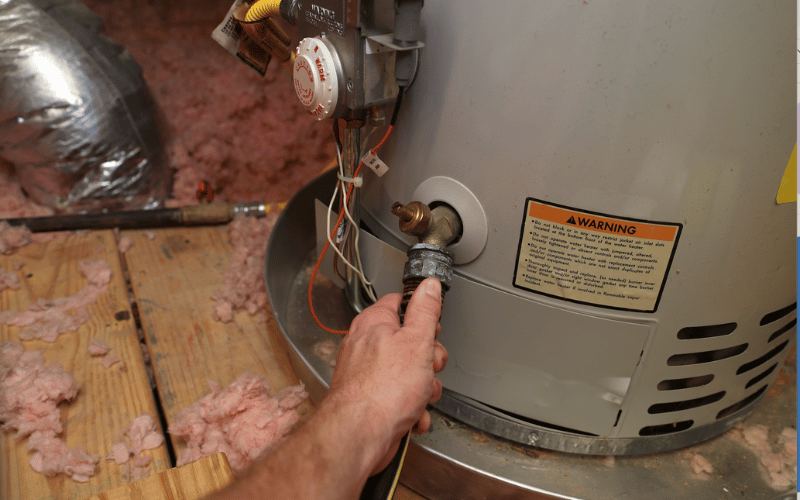The article in the next paragraphs on the subject of Tips For Maintaining Your Hot Water Heater is definitely entertaining. Give it a go and draw your own findings.

Warm water is important for daily comfort, whether it's for a refreshing shower or cleaning dishes. To ensure your hot water system runs efficiently and lasts longer, normal upkeep is essential. This short article offers practical tips and insights on how to preserve your home's hot water system to avoid disruptions and pricey fixings.
Intro
Preserving your home's hot water system may appear complicated, yet with a couple of simple actions, you can ensure it runs efficiently for several years to find. This overview covers whatever from comprehending your hot water system to do it yourself upkeep tips and recognizing when to call in specialist help.
Relevance of Preserving Your Hot Water System
Routine upkeep not just extends the life expectancy of your warm water system yet additionally ensures it operates efficiently. Overlooking maintenance can result in reduced efficiency, higher energy costs, and also early failure of the system.
Indications Your Hot Water System Demands Maintenance
Recognizing when your hot water system requires attention can protect against major concerns. Look out for indications such as irregular water temperature, weird sounds from the heater, or rustic water.
Understanding Your Warm Water System
Before diving into maintenance tasks, it's practical to understand the fundamental elements of your warm water system. Generally, this includes the hot water heater itself, pipelines, anode poles, and temperature level controls.
Month-to-month Maintenance Tasks
Regular month-to-month checks can help capture small issues prior to they escalate.
Flushing the Water Heater
Purging your hot water heater removes debris build-up, enhancing effectiveness and extending its life.
Checking and Changing Anode Rods
Anode rods avoid corrosion inside the container. Checking and replacing them when broken is critical.
Checking and Adjusting Temperature Level Settings
Readjusting the temperature level settings makes sure optimal efficiency and safety and security.
Do It Yourself Tips for Maintenance
You can perform several upkeep jobs on your own to keep your hot water system in top condition.
Checking for Leaks
On a regular basis evaluate pipelines and connections for leakages, as these can cause water damage and higher expenses.
Testing Stress Relief Valves
Testing the pressure relief valve guarantees it works appropriately and prevents extreme pressure buildup.
Protecting Pipes
Shielding hot water pipes minimizes heat loss and can save energy.
When to Call a Specialist
While do it yourself upkeep is beneficial, some problems require professional proficiency.
Facility Problems Needing Professional Assistance
Examples include significant leaks, electrical issues, or if your hot water heater is consistently underperforming.
Routine Specialist Upkeep Conveniences
Specialist maintenance can include extensive assessments, tune-ups, and making certain compliance with security requirements.
Conclusion
Regular maintenance of your home's warm water system is crucial for effectiveness, long life, and expense savings. By complying with these suggestions and knowing when to seek specialist help, you can make sure a trusted supply of warm water without unexpected interruptions.
How to Maintain an Instant Hot Water Heater
Before tinkering with your hot water heater, make sure that it’s not powered on. You also have to turn off the main circuit breaker and shut off the main gas line to prevent accidents. Also turn off the water valves connected to your unit to prevent water from flowing into and out of the appliance. 2. When you’re done, you have to detach the purge valves’ caps. These look like the letter “T†and are situated on either side of the water valves. Doing so will release any pressure that has accumulated inside the valves while at the same time avoid hot water from shooting out and burning your skin. 3. When the purge valves’ caps are removed, you have to connect your hosing lines to the valves. Your unit should have come with three hoses but if it didn’t, you can purchase these things from any hardware or home repair shops. You can also get them from retail stores that sell water heating systems. Read the user’s manual and follow it to complete this task properly. When the hosing lines are connected, open the purge port’s valves. 4. You should never use harsh chemical cleaners or solutions when cleaning your unit. Make use of white vinegar instead. It should be undiluted and you’ll probably use about 2 gallons. 5. Now flush your water heater. This task should probably take about 40 minutes. We can’t give you specific directions for this because the procedure is carried out depending on the type, model and brand of your heater. With that being said, refer to the user’s manual. 6. When you’re done draining the unit, you have to turn off the purge port valves again. Remove the hosing lines that you earlier installed on each of the water valves. Put the valve caps (purge port) back in their respective places and be very careful so as not to damage the rubber discs that are found inside these caps. 7. Now that everything’s back in place, check your user’s manual again to find out how to reactivate your water heating system. 8. Once it is working, turn one of your hot water faucets on just to let air pass through the heater’s water supply pipes. Leave the tap on until water flows smoothly out of it. https://www.orrplumbing.com/blog/2014/september/how-to-maintain-an-instant-hot-water-heater/

Do you appreciate reading up on How to Maintain a Hot Water Heater in a Few Simple Steps? Leave a remark down below. We would be pleased to listen to your responses about this posting. In hopes that you come back again in the future. Loved our blog entry? Please quickly share it. Help somebody else discover it. Thanks a bunch for your time. Revisit us soon.
Give Me A Quote!